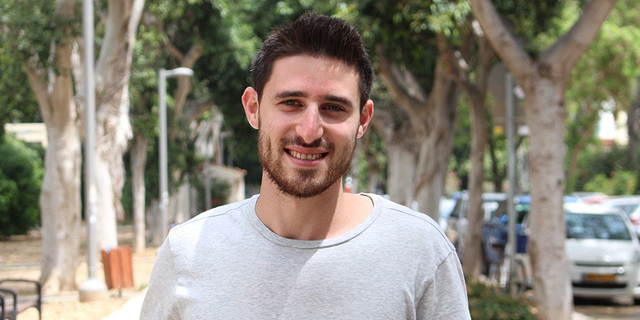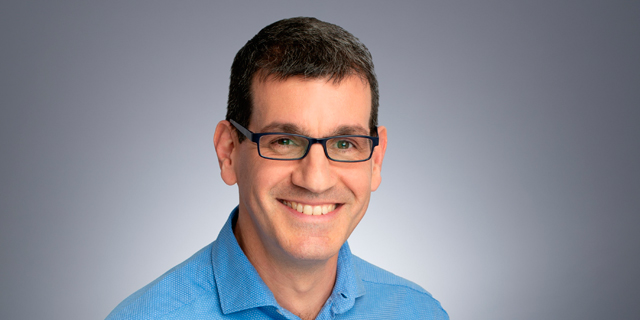
Interview
How three former CEOs went from entrepreneur to employee
After having to pivot their careers, the three discussed their ability to influence, innovate, and initiate change within a large organization, while giving up on their dream
Guy Shachar’s story is similar to that of hundreds of Israeli entrepreneurs in the high tech industry. In 2017, he co-founded along with his two partners a startup by the name of Perceptive AI, which developed a system based on artificial intelligence that assists organizations in predicting which customers will forgo their services months in advance. Like many others, the company grew, raised a few million dollars, and recruited employees. However, after a few years of operations, Shachar, who was the company’s CEO, along with his co-founders, decided to close the venture. Shachar moved on and returned to being just another employee at a big company.
“To put it simply: it wasn’t an easy decision to make, but I wholeheartedly believe that it was the right choice. We decided that moving on was the right thing to do for both our investors and employees,” he said. “We understood that the market we were in wasn’t big enough, and the constant search to alter our product caught us off guard during the first coronavirus (Covid-19) wave.” After a few months, where the team consulted with others in similar situations in an attempt to understand what steps to take going forward, Shachar began searching for an organization who would be interested in his entrepreneurial background.“I doubted whether any position could bring me the same level of fulfillment and excitement as being an entrepreneur who founded a company from scratch. After we made the decision, it was unclear what I wanted to do going forward. After years as an entrepreneur who built a company and product it’s very difficult to suddenly focus on an area from an employee standpoint, whether that’s creating a podcast, going into sales, or business development. I wanted to take the tools I acquired as an entrepreneur and continue to learn, develop, and use them wherever I went,” he said.
After much thought, Shachar decided that he wanted to lead meaningful business procedures at a growing global company. He then met with Chemi Katz, the CEO of Namogoo, and saw an opportunity. Today, he serves as VP of Strategic Initiatives at the Software as a Service (SaaS) company. “I brought the experience I acquired as an entrepreneur to my current position, but now I’m implementing it in a large mature company.” One of Shachar’s fears was that once he resumed being an employee, he’d transition from managing a company and being the person who’d make the decisions to just another employee among many. “It was a real fear, but now I know that it really depends on the type of position you assume combined with the founders and management you are working with. Luckily, I receive the freedom and support to deal with a variety of meaningful issues when it comes to the company’s growth that requires out-of-the-box thinking, from being involved with acquiring other startups to planning go-to-market launches of Namogoo’s newest products. Large established companies who launch new products to market have many similar elements to startups. You have to be humble yet creative; and learn to respond rapidly if you want to achieve significant growth from a product that wasn’t around yesterday,” he says. Still, he sees himself as an entrepreneur and remains nostalgic of that life. “I miss that feeling of being the underdog, and doing something unbelievable - creating something that didn’t exist before, and convincing people that they’ve got to have it. People always say that a startup is like a roller coaster. The truth is there are more downs than ups, but those ups make you happier than you can put into words.” Despite going back to being an employee, Shachar has not given up all hope when it comes to his entrepreneur dreams, and the desire to build something on his own still burns within. “In the future, I’ll build something completely different,” he says. “I don’t know whether it will be next year or in the next five or ten years. I still haven’t fulfilled my mission. Building that first startup motivated me. As an entrepreneur, to me that adventure is more of a marathon than a simple sprint. I get inspired from seeing new unicorns that are often founded by people who’ve tried it twice or three times before. I don’t think that’s a coincidence. Today, I’m focused on giving as much of myself to Namogoo as possible, and learning new areas that will help support me as an entrepreneur when I found my next company.” “I never thought I’d go back to being an employee” After the first year as an entrepreneur of Yeda Finance, which Dolev Beilis founded, he never imagined he would resume being an employee. The company, which he founded along with three of his partners, operated for seven years in the algorithmic trading sector, mainly in Europe. A change in clearing fees in European regulation caused the company significant damage in algorithmic revenue, and led the company to shut its doors in 2015. “Shutting down the company was a process. When it seemed as if the company wasn’t successfully expanding like it should, and we couldn’t grow the business, I made the decision to go for something more stable this time around, and not start a new venture. After several years living in the extreme, I specifically wanted something different,” he says. “During the company’s first year, none of us thought that they’d ever go back to being an employee. It looked very promising. There was some disappointment, but I’m built to look forward and not backward.” Today, Beilis manages engineering operations at the Fireblocks R&D center. The company is a successful unicorn, and Beilis feels as if he has finally found the right mix: working as an employee for a groundbreaking company which he doesn’t lead, but holds a significant position in. “After many years on that entrepreneurial roller coaster, I wanted something else. I was less concerned about salary, and wanted to get off that roller coaster. I’m proud to work for a groundbreaking company, and hold a significant influential position but I’m not in the driver’s seat,” he says. “When you’re steering it’s another type of responsibility altogether. There’s a lot of uncertainty, and also a lot of pressure to ensure that you’re heading in the right direction. There are also significant challenges to being an employee, but there is more certainty that you’re following an idea that you wholeheartedly believe in and know what you’re doing. That’s one of the reasons why I chose Fireblocks, because I know who leads the company and believe that they know what they’re doing,” he said.